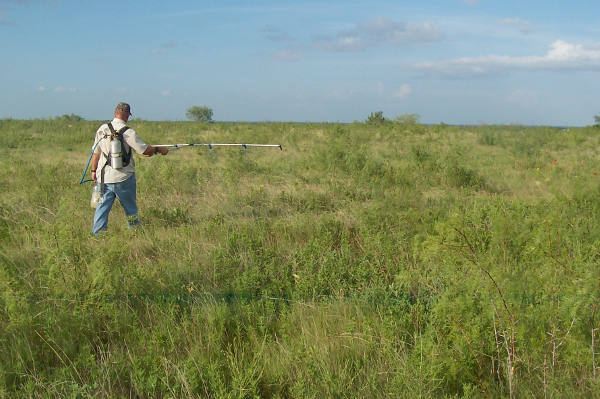
What’s surprising in early May is not that West Texas is so dry but that the eastern half of the state is in relatively good condition.West Texas is doing “as expected,” and is in the second year of major drought.There’s been enough rain in East Texas to keep temperatures down to near normal this summer.
May 8, 2012

What’s surprising in early May is not that West Texas is so dry but that the eastern half of the state is in relatively good condition, said Dr. John Nielsen-Gammon, state climatologist and regents professor at Texas A&M University.
“The thing that was unexpected was having East Texas not be in an extreme drought right now,” Nielsen-Gammon said. “We had a second year of La Niña last winter. It just finally ended officially last month. And normally – four years out of five – you end up with a dry winter. So things have worked out as well as possibly can be expected for East Texas.”
Unfortunately, West Texas is doing “as expected,” and is in the second year of major drought, Nielsen-Gammon said.
Reports from Texas AgriLife Extension Service county agents tell just how dire the situation is in parts of West Texas.
The weekly comments of Ryan Martin, AgriLife Extension agent for Motley County, southeast of Amarillo, is representative of many West Texas county agents’ reports coming. Motley County hasn’t received any rainfall for several weeks, and hot, dry winds have prevailed.
“Ranchers are seeing pastures turn brown overnight, and cattle are running out of grazing very quickly,” Martin said. “Producers are being forced to start feeding supplements and hay that has just been bailed up.
“Summer grasses are trying to come out, but without any moisture, they have just stalled. At this time there is no moisture to 24 inches deep. Farmers are beginning to get worried as planting season is right around the corner, and there is no soil moisture. Right now it seems like déjà vu with the high winds, high temperatures and no moisture.”
Higher-than-normal temperatures – in some cases as much as 15 degrees above average – are compounding the drought in West Texas, Neilsen-Gammon said.
“Random effects” of the jet stream are partly to blame for the higher-than-normal temperatures, and about 1 degree can be attributed to global warming,” he said. But a large portion of the higher temperatures are caused by the dry soils. Dry soils mean there isn’t any moisture to evaporate and cool things off.
“There’s been enough rain in East Texas to keep temperatures down to near normal this summer,” he said. “I wish I could say the same for West Texas.”
If there’s any other good news, it’s that North Atlantic Ocean sea-surface temperatures are near normal, Neilsen-Gammon said. “For Texas, that would seem to indicate that we might be getting more rainfall (this summer) than we have for the past several years.”
More information on the current Texas drought and wildfire alerts can be found on the AgriLife Extension Agricultural Drought Task Force website at http://agrilife.tamu.edu/drought/.
You May Also Like



